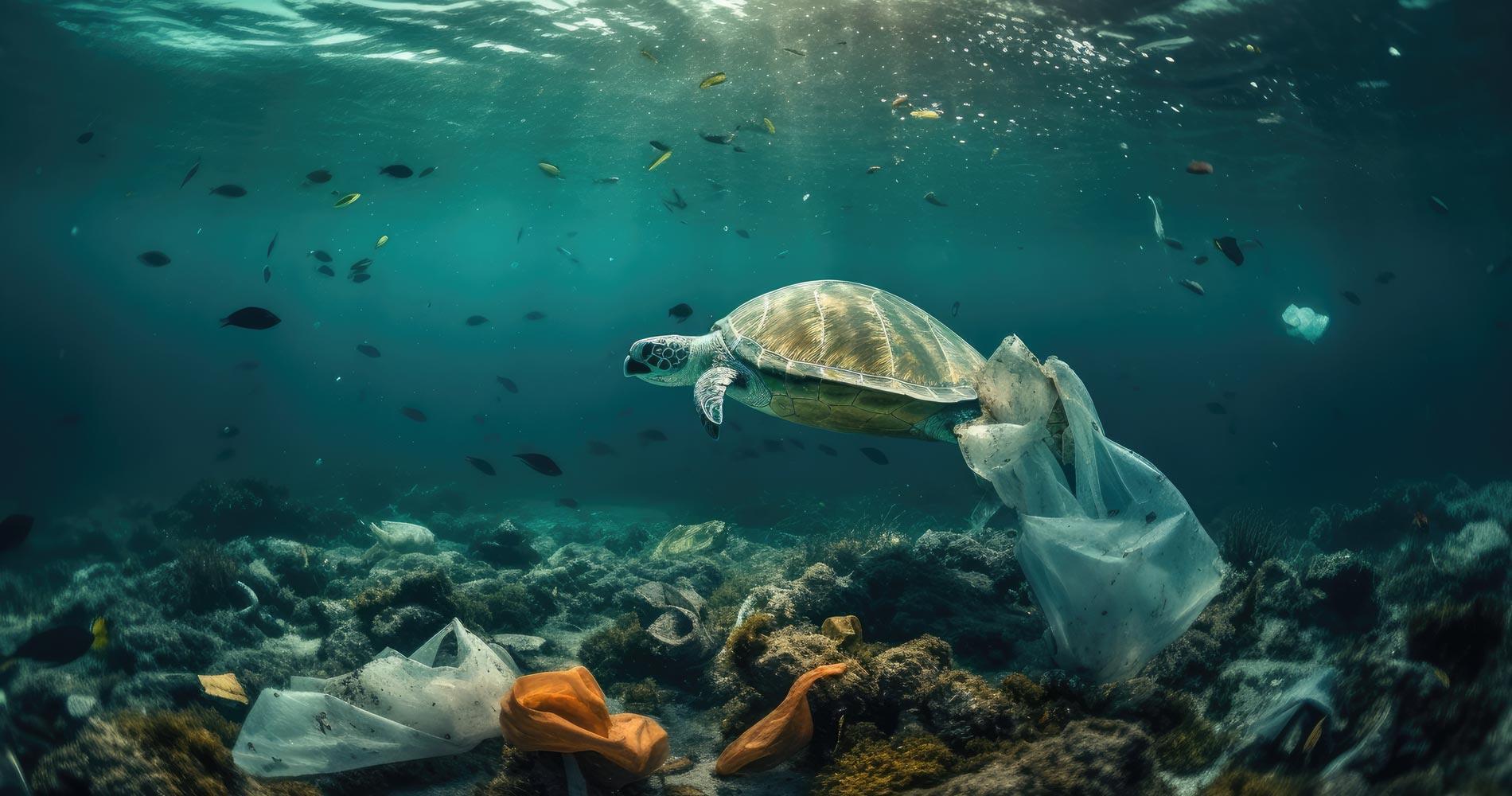The plastic pollution crisis has reached unprecedented levels: plastic shopping bags, plastic packaging, plastic water bottles, etc. About 80% of all the plastic ever produced remains in the environment, from Mount Everest to the ocean floor. The UN, NGOs and the private sector are teaming up to fight this existential threat. In June 2023 the UN announced that it is close to finalizing a treaty to end plastic pollution. Together with companies like Ocean Cleanup and WasteShark, which have developed new technologies to fight existing pollution in our oceans, the battle is just beginning.
Angeladora Novi
11 August 2023
French version | Spanish version
“Lightweight”, “cost effective”, “durable” and “versatile” are only some of the characteristics of plastic that have led this material to become so widely used in everyday life. Since the mid-fifties, the annual rate of plastic production has increased steadily. From a global yearly production of 1.5 metric tons in 1950 to 390.7 million metric tons in 2021, the volume of plastic production is expected to reach 590 million metric tons by 2050.
Plastic pollution is a global threat requiring global cooperation. While people in high income countries also consume the most plastic. These countries also have the best waste management systems. In low-income countries plastic consumption is low despite a lacking waste management infrastructure. The majority of plastic waste comes from middle-income countries whose plastic usage is growing without the necessary waste management infrastructure to deal with increase in consumption. Nearly 50% of plastic is thrown away after only one use.
Isolated responses at a state level with voluntary national measures have proven ineffective. In March of 2022, the United Nations Environment Assembly (UNEA-5) in Nairobi approved a resolution to develop, by 2024, an international legally binding agreement to end plastic pollution. The UN Member States have committed to pave the way for a global, legally-binding response to end plastic pollution. The work of the Intergovernmental Negotiating Committee (INC) – established by the UN to forge a Treaty to end plastic pollution – started in November 2022 in Uruguay and continued between May and June of this year. A first draft is expected by November 2023.
Despite the efforts to develop efficient recycling mechanisms, it is estimated that only about 9% of plastic waste is recycled annually. The rest of it ends up in the natural environment, killing marine and terrestrial wildlife, contaminating the food chain and producing chemical pollution.
The majority of plastic (80%) is collected and prevented from moving around the environment. Of that 80%, half is deposited in landfills and the other half is recycled or incinerated. The remaining 20% of plastic is either not collected, improperly disposed of, or is just dumped anywhere ending up as litter.
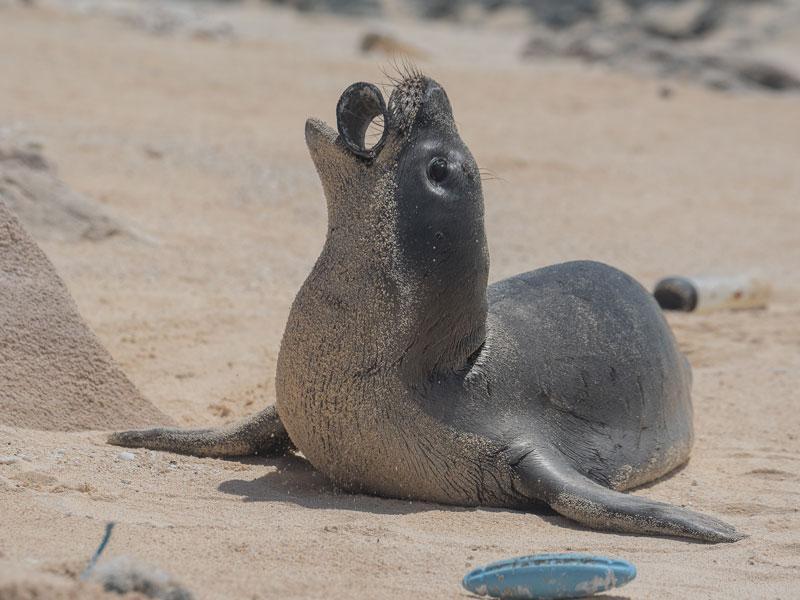
Monk seal, Laysan Island, Matthew Chauvin. © oceancleanup
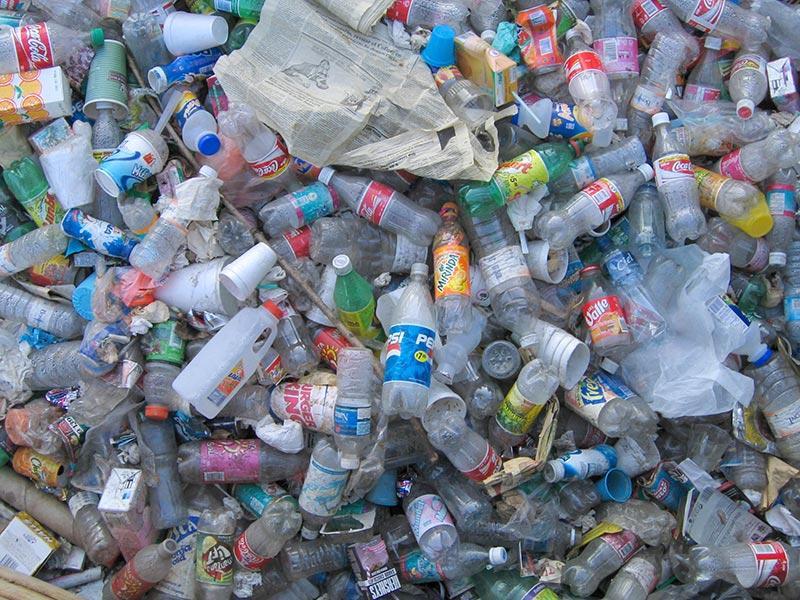
Pile of plastic trash. © nc4
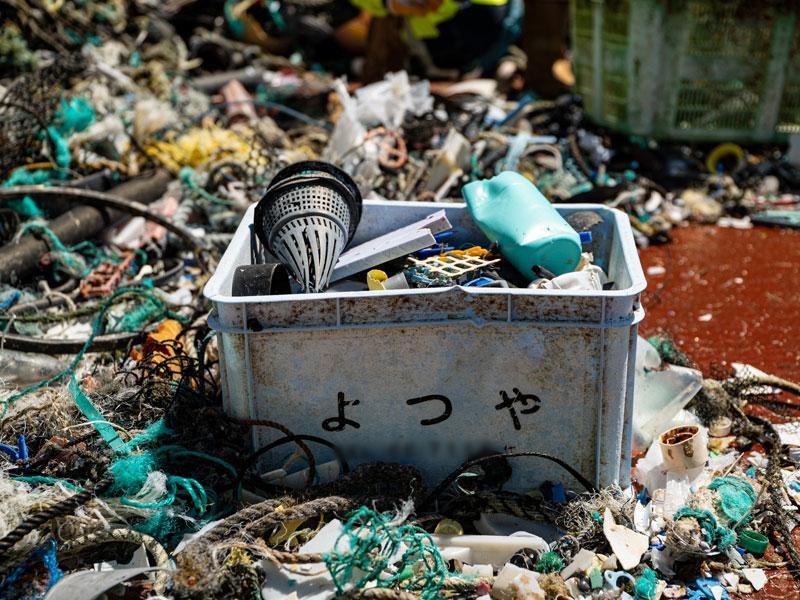
The Ocean Cleanuup, Oceans Systems 002 Extraction. © oceancleanup
While most plastic stays on land. Plastic is estimated to constitute more than 80% of marine debris, including industrial sewage, items dumped in the ocean (especially fishing gear) and those thrown into rivers, which ultimately flows into the sea.
80% of plastic in the ocean ends up on beaches. The remaining 20% can take years to break free from the coast and float out into the open ocean. Once out there, plastic will float around for as long as centuries. As a consequence of wave-action, wind and sunlight, large plastic debris degrades and breaks down into smaller particles, known as microplastic, which is not visible to the naked eye. 70% of marine debris sinks to the seabed (especially PET bottles), about 30% rests on the surface and in the water column. While a PET bottle will sink, its cap will stay afloat much longer.
The plastic degradation process takes a long time. Depending on the plastic it can take as long as 600 years (fishing lines). Plastic bags in the ocean will usually decompose in 20 years while plastic bottles can take up to 450 years.
Every year about 8 million tons of plastic flow into the sea adding to the existing marine litter. One of the biggest collections of marine debris is the Great Pacific Garbage Patch. Situated in the North Pacific Ocean between Hawaii and California, it covers approximately 1.6 million square kilometers, an area double the size of Texas and contains around 1.8 trillion pieces of plastic together weighing about 100 million kilograms. Many studies have confirmed that plastic makes up the majority of the litter in the Great Patch due to its long-term durability and that 80% of the plastic in the Great Pacific Garbage Patch comes from fishing activities at sea. This includes fishing equipment dumped or lost at sea. 92% of the plastic in this patch consist of larger objects, only 8% are microplastic.
Plastic pollution in the ocean poses a big risk to marine wildlife and humans. Fish and other marine life often confuse plastic for food and eat it. Smaller organisms, like plankton, feed on microplastic, which is absorbed into their tissues. When fish eat these smaller organisms the microplastic in turn contaminates their tissues. The microplastic subsequently impacts higher levels in the food chain when contaminated fish are consumed by human beings. Plastic pollution therefore impacts the entire food chain, from the tiniest organisms to larger species, from fisheries to the table. Due to the chemical composition of microplastic, consuming it is harmful and, in some cases, life threatening for marine life and human health.
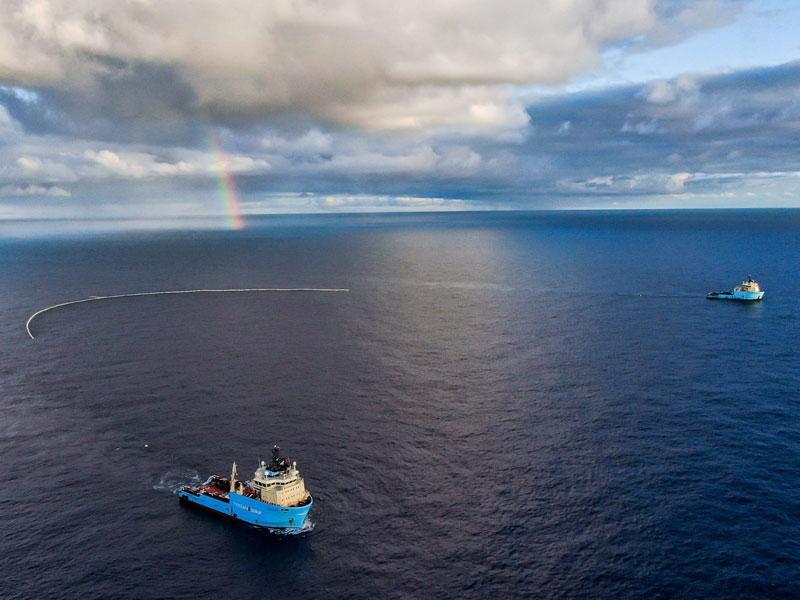
Tender Inspection Flight, 24.08.2021 pre-meetings 3 scaled. © oceancleanup
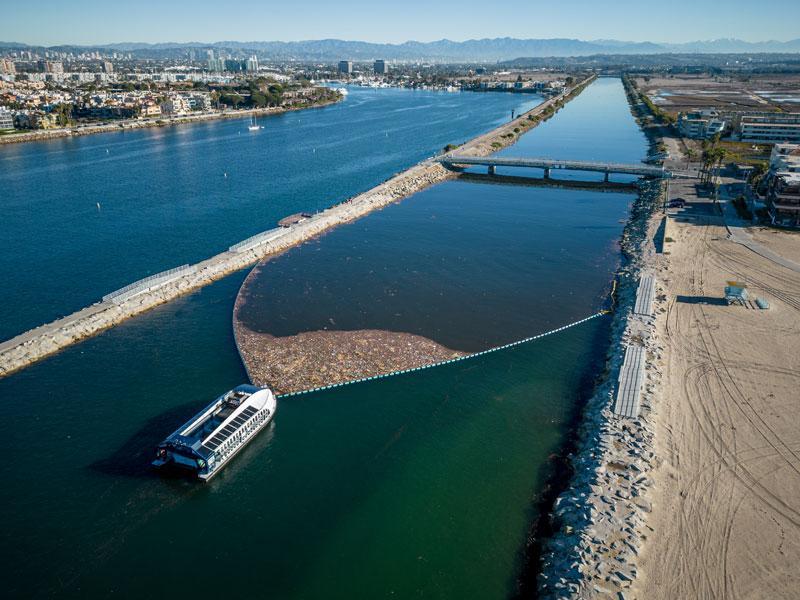
The Ocean Cleanup Interceptor 007 Ballona Creek Drone. © oceancleanup
In a linear plastic economy, most plastic is produced and thrown away after a single use, while a very small percentage is recycled or reused. In a circular system, material stays within the system and circulates in a closed loop. Although the strategies that the INC will adopt to end plastic pollution have still not been defined, transitioning from a linear plastic economy to a circular sustainable system is at the heart of their plan. The UN will encourage the reuse of plastic products, such as containers and bottles and the introduction of fiscal measures, such as tax incentives and tariffs.
Leaving behind the current “produce, use, waste system” and transitioning to increased circularity, will require enhancing products’ recyclability and fostering plastic reuse. Introducing regulations on production criteria would force plastic and packaging producers to comply with circularity design standards. This will not only increase a product’s life span beyond single use, but hopefully raise consumers’ awareness of the value of reusable plastics.
Overcoming plastic pollution requires a bigger effort in which the private sector plays a fundamental role. Scientists and entrepreneurs around the globe have created clever initiatives to fight against marine pollution – from removing plastic already in the ocean, to creating a system to stop it reaching the seas in the first place.
For the past ten years, Ocean Cleanup, a nonprofit organization, has been creating technologies to rid our waters of plastic. Ocean Cleanup has removed almost 200,000 kg of plastic from the sea using a U-shaped 3-meter-deep floating net barrier which captures litter on the current. On a weekly basis, trash is collected and brought to recycling facilities. Developed by Drone Solutions, the WasteShark is another example of initiatives which remove plastic debris from the sea. By staying close to the shore, this electric drone collects plastic waste from the water surface – up to 350 kg of litter at a time.
The plastic pollution crisis has reached unprecedented levels. About 80% of all the plastic ever produced remains in the environment, from Mount Everest to the ocean floor. Excessive levels of pollution are harming wildlife, human beings and destroying the natural environment. Despite the severity of the situation, experts believe that there is still time to address it.
The UN Treaty to end plastic pollution will impose global legally binding measures by 2024. These international standards will force the transition to a circular plastic economy enhancing the recyclability and reuse of plastic. Yet in order to achieve a plastic free future, the efforts of all sectors are necessary, including the efforts of the private sector to clean up the ocean using cutting edge technology.


